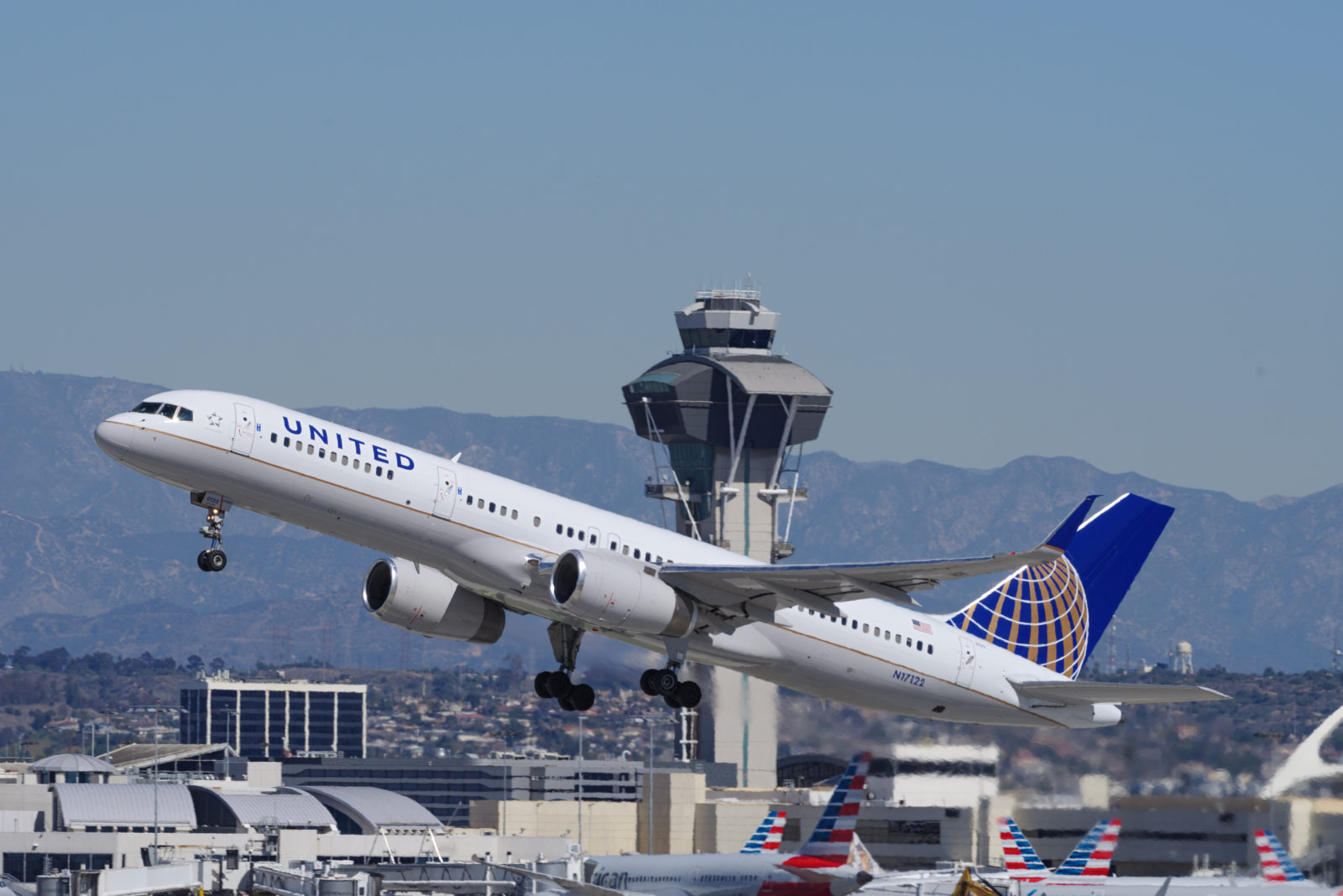
A mid-air collision alarm that went off during a United Airlines flight from Newark to San Francisco left one passenger with a broken back, and another with a fractured ankle after the pilots took evasive action to avoid hitting an aircraft that was passing 1,500 feet below them.
As well as seriously injuring two passengers, the emergency maneuver that the Captain performed to avoid any chance of a mid-air collision left two flight attendants in the forward galley with minor injuries after the sudden aircraft movement toppled them over.
The incident occurred on September 19, 2024, as United Airlines flight UA2428 was in the final stages of an otherwise routine five and half hour transcontinental flight to California, according to a final report into the incident, which has just been published by the National Transportation Safety Board (NTSB).
As the Boeing 757 approached San Francisco International Airport (SFO), the pilots started the descent to land and were given clearance by Air Traffic Control to descend to Flight Level 310, where they maintained the flight level until receiving further instructions.
But 500 feet out from reaching Flight Level 310, a collision alarm known as TCAS sounded in the cockpit – a last line of defense against a mid-air collision.
TCAS stands for ‘Traffic Alert and Collision Avoidance System’ (TCAS), although internationally, it is also sometimes known as the Airborne Collision Avoidance System (ACAS).
The system functions independently of ground-based alert systems, and the more advanced system, known as TCAS II, provides both traffic advisories and resolution advisories.
In the case of United Flight 2428, TCAS initially provided a standard traffic alert before almost immediately providing a more serious resolution advisory, which offers the pilots a “recommended escape maneuver within the vertical dimension” – in other words, the system will tell pilots to either climb or descend and at what angle in order to avoid a collision.
Responding to the recommendations of TCAS, the First Officer disengaged the autopilot and suddenly pitched the aircraft up in line with the system’s escape maneuver recommendation.
As the plane was already in its descent for landing, the seatbelts had been switched on, and most passengers were seated, meaning that the risk of injury as a result of the evasive maneuver was relatively low.
However, several passengers were still using the lavatories at the back of the aircraft at the time of the TCAS alert.
One of those passengers was lifted up off the floor by the sudden pitch upwards, tossing them against the ceiling of the lavatory and resulting in a fracture of the second lumbar spinal vertebra.
The second passenger was exiting the lavatory at the time of the accident and was flung upwards towards the ceiling. As he fell back down to the floor, he landed on his leg and fractured an ankle.
At the same time, two flight attendants who had been busy preparing the forward galley for arrival were also thrown to the floor due to the force of the sudden aircraft movement, although both escaped serious injury.
Accident investigators provided a matter-of-fact cause of the accident, saying in the final report: “The abrupt pitch control input by the flight crew in response to a TCAS resolution advisory.”
The NTSB did not provide any recommendations.
TCAS is mandated on all commercial aircraft in the United States with more than 30 seats. The system is believed to have successfully helped the pilots of a Delta Air Lines Airbus A319 avoid a collision with a US Air Force jet as its made its initial ascent out of National Reagan Airport on Friday afternoon.
Earlier this month, there were a slew of false TCAS alerts at Reagan National Airport due to a faulty test of anti-drone technology by the U.S. Secret Service and Navy. Several aircraft received TCAS alerts around the airport despite there being no risk of collision, according to the Federal Aviation Administration.
Related
Mateusz Maszczynski honed his skills as an international flight attendant at the most prominent airline in the Middle East and has been flying ever since... most recently for a well known European airline. Matt is passionate about the aviation industry and has become an expert in passenger experience and human-centric stories. Always keeping an ear close to the ground, Matt's industry insights, analysis and news coverage is frequently relied upon by some of the biggest names in journalism.








Well, I for one find this “appealing” rather than a mid air collision. Kind of like my car BEEPING incessantly and then JAMMING on the brakes to let me know that a vehicle is SPEEDING around the really scary corner and I am in the “hospital seat”. Would I rather be jerked back into my seat or be pummeled by the SPEEDING vehicle in non other than the dreaded “hospital seat”? I’ll take EITHER one, thank you so very much, but, what I want to know is this: is this feature available in ALL commercial airliners, because I just NEVER fly on a Boeing”. Kind of like driving another vehicle BRAND witout the safety features that mine offers on ALL their CURRENT vehicles. So, is this available and in USE on say an Airbus? Good Lord, I might have to take the train or even drive
I meant EITHER one being the violent sudden rise in altitude or my vehicle jerking me back and applying the brakes.
FAA Certificated Commercial pilot here:
Too hard to link to the NTSB report? So sorry. Here ya go:
file:///home/gavron/Downloads/Report_DCA24LA316_195189_3_29_2025%203_11_58%20PM%20(1).pdf
They were above flight level 310 (FL310, 31,000 ft based on standard atmospheric pressure) and pitched up to cancel the descent to that level. They didn’t pitch up to go higher. The 0.6G wasn’t dangerous but likely was scary and those on one foot or badly placed suffered injuries.
The NTSB got the acronym wrong. TCAS is Traffic Collision Avoidance System. (Yay Wikipedia, Sorry Gemini). The word “Alert” is not part of it, although it does provide alerts and resolution advisories (RAs).
The NTSB also screwed up on whether the seat belt indicators were on. NTSB says they were. I say there were not. People were in the lavs, FAs were in the aisles, and at FL310 nobody is in the “descent” phase (not stage) of the flight.
The NTSB typically glosses over things they don’t care about. It’s unfortunate, and we’d like to believe all their investigations are useful to help keep the rest of us pilots and pax safe, but sadly, most of it is just fodder for Airplane Disasters/Mayday and crappy articles.
Thank you
Thank you for that, very helpful.
People are idiots using the lavatory during landing when the seatbelt signs are expressly turned on to avoid injuries such as these.
How does a positive G pitch up maneuver cause “One of those passengers was lifted up off the floor by the sudden pitch upwards, tossing them against the ceiling of the lavatory”. That makes no sense. The action would have had to have been a pitch down maneuver.
That is correct. An upward pitch makes you feel like you’re being smashed into the floor!
I’m surprised that the plane was landing on autopilot.
They were not landing. At 31,000 ft they were starting a descent.